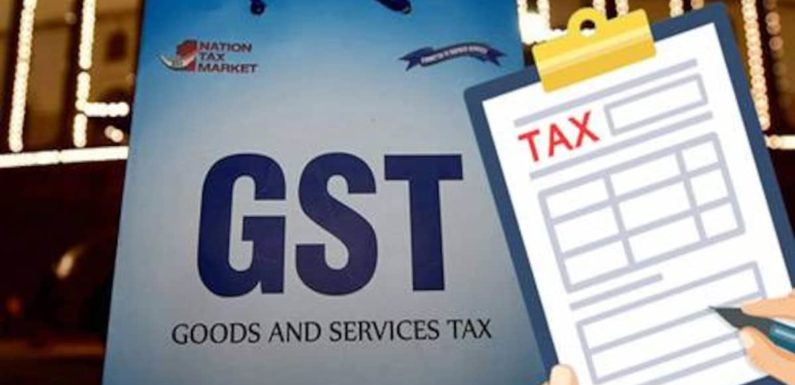

GST is a unified, vacation spot based indirect duty. Such a taxes is enforced on the worthiness put into goods as well as services at each level of the resource chain. The reason behind utilizing GST is to make a unified market in the united states. So, a bunch of fees are subsumed and the duty compliance is reduced to attain such an objective.Thus, 17 Centre and Status levies such as excise responsibility, service taxes, VAT, Central Sales Duty etc. are consolidated.
Obviously, GST is obviously one of the road breaking duty reforms of India. Actually, the interim money minister Mr. Piyush Goyal was positive about GST earnings collection through the Interim Budget 2019. He said that the GST profits have been upbeat. This is regardless of the major GST rate reductions.
For instance, the full total gross GST earnings collected in jan, 2019 is Rs 1,02,503 crore. Now, this is actually the third time that GST Income collection has crossed one lakh crore make in financial yr 2018-2019. Furthermore, the total amount of GSTR 3B Dividends filed for the month of December up to 31st January, 2019 is 73.3lakh.
Benefits of GST Registration
1. Upcoming of Common Country wide Market
Beneath the Pre – GST circumstance, express and local self applied governments practiced distinctive sovereignty in taxation. With specific areas having strong taxation privileges, each used to levy indirect fees such as VAT, Central Sales Duty, Service Duty, Excise etc in various forms. Not just that, to attract investment in their respected states, express governments depended on incentives. This causes different prices of the same goods and services in several states. While expresses benefited from such a duty structure, the current economic climate all together suffered.
But with the arriving of GST, the authorized duty assessees now pay an individual, uniform duty on goods and services in the united states. Furthermore, GST is lead by the Central Tax Power – the GST Council. This council is chaired by the Union Fund Minister and has various claims as its associates. Each express member thus participates in the formulation of the indirect duty policy of the united states.
2. Eradication of Cascading Aftereffect of Taxes
Cascading tax result, also called tax on duty, occurs whenever a good is taxed on every level of its development, until it comes to the ultimate consumer. In that situation, each being successful copy of good is taxed including the taxes costed on the preceding copy. Consequently, the ultimate consumer bears the responsibility of multiple fees enforced on every level of production, resulting in inflationary prices. To raised understand the duty on tax result, let’s reconsider these example.
3. Increased Exemption Limit for Small professionals or PROVIDERS
Under the prior indirect tax framework, various indirect fees got different sales turnover restrictions for registrations.
Total annual Sales Turnover Restricts for Indirect Fees Under Previous Duty Regime
The threshold restricts for registrations under various indirect fees was the following:
Excise Obligation – Manufacturers with an gross annual turnover of Rs. 1.50 Crores and above were necessary to sign up for excise duty and therefore prone to pay excise duty.
Service Duty – Providers with an twelve-monthly sales turnover of Rs. 10 lakhs and above were necessary to sign up for service tax and therefore prone to pay the same.
Value Added Duty – This mixed for different claims.
Total annual Sales Turnover Restricts for Indirect Fees Under GST
The turnover restricts for sign up under GST are higher, which exempt the tiny traders and companies from paying GST. Actually, in the 32nd GST Council Assembly, the turnover boundaries for GST enrollment were further increased. Hence, with the offer of such GST exemptions and benefits, 35 Lakh small stock traders, manufacturers and companies are anticipated to be benefited.
Regarding to 32nd GST Council Getting together with:
For suppliers of goods, the GST exemption limit increased from Rs 20 Lakh to Rs 40 Lakh
GST exemption limit for dealer of services remains unchanged at Rs. 20 lakhs
And then for special category says, the GST exemption limit increased from Rs. 10 lakhs to Rs. 20 lakhs
Please note: Hilly and north eastern state governments have been given a choice to choose either Rs. 20 lakhs or Rs. 40 lakhs as the turnover limit for GST exemption.
4. Small Businesses Take advantage of the Composition Scheme
To encourage reduced fees and taxes compliances, the Structure Scheme was released under GST. Small enterprises authorized under the system must pay a set percentage of taxes on the turnover. Furthermore, unlike the standard GST duty payers, smaller businesses registered under Structure System need to record one quarterly go back. Following will be the duty rates under Structure Scheme:
Smaller businesses with a turnover of Rs 1.50 crores would pay a set GST rate of 1%. They’ll now record one tax come back only.
Small companies with an gross annual turnover of Rs 50 Lakhs would now pay a GST of 6% rather than 18%.
5. Reduced Duty Compliances as Variety of TAXATION STATEMENTS to be Filed Under GST Has DROP
Since a bunch of fees existed under the prior indirect tax composition, the businesses documented for various indirect fees had to endure multiple compliances.
Snapshot of the Go back Filing Circumstance That Existed Ahead of GST
Excise Give back – Once a month/Quarterly with regards to the range of business product (Large business, EOU or SSI)
Service Taxes – Half annually return
Value Added Duty – Once a month/Quarterly with regards to the Declare that is responsible to acquire VAT.